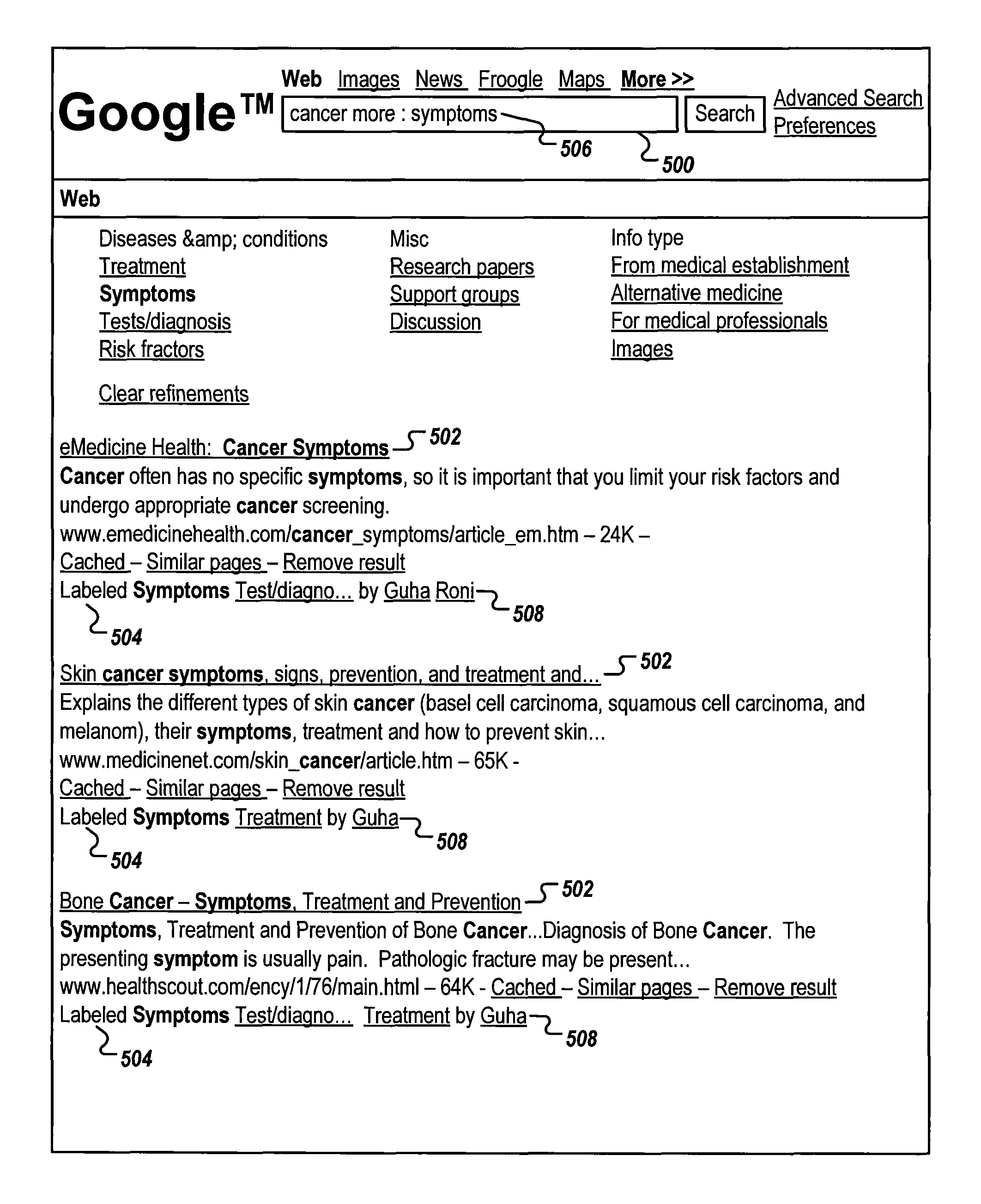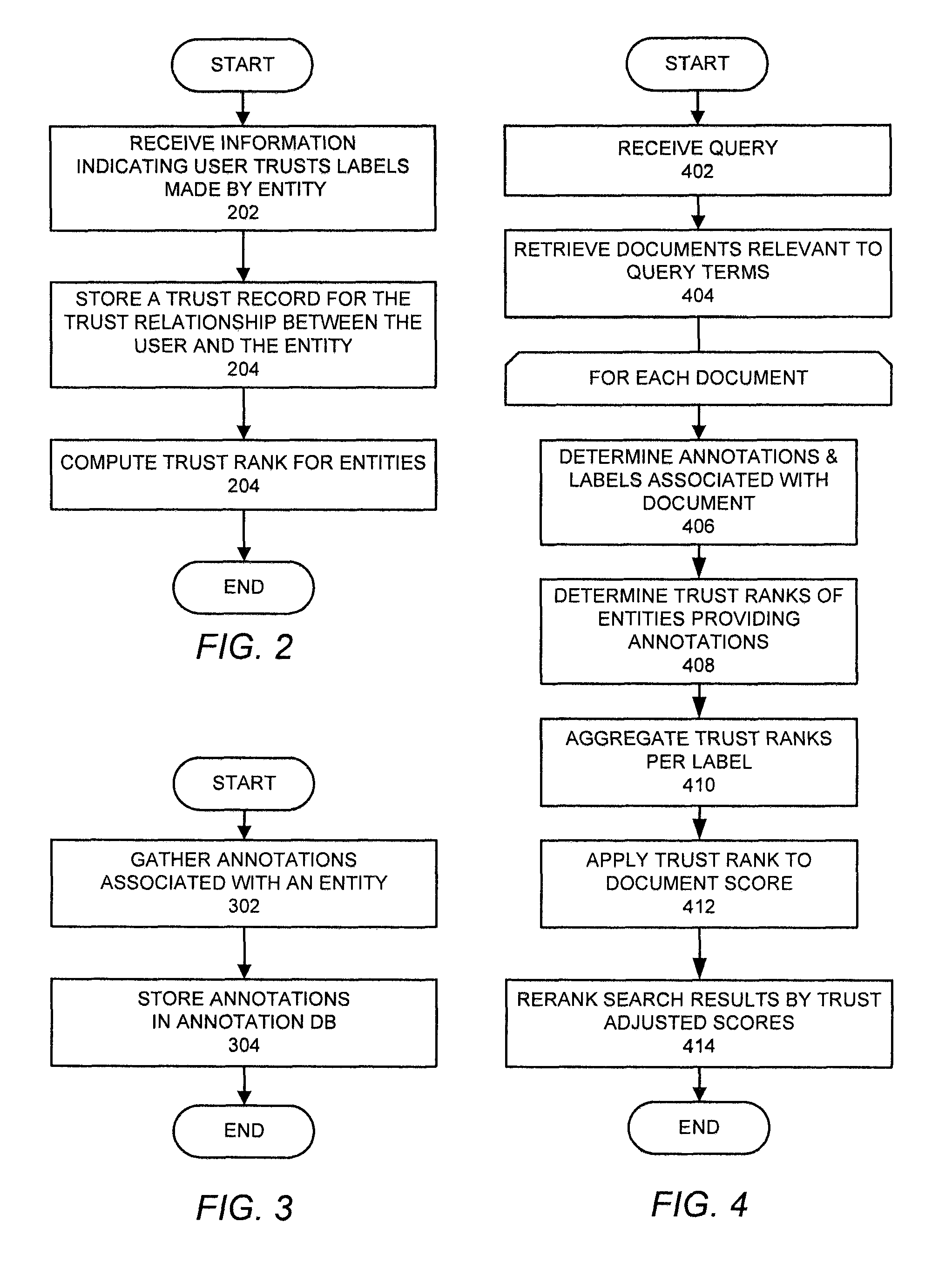Search result ranking based on trust
a trust-based, search engine technology, applied in the field of search engines, can solve the problems of not fully capturing user intent, uninformed, biased, hostile or otherwise not trustworthy, and particular user's (or author's) views may not be trusted by others,
- Summary
- Abstract
- Description
- Claims
- Application Information
AI Technical Summary
Benefits of technology
Problems solved by technology
Method used
Image
Examples
Embodiment Construction
System Overview
[0019]FIG. 1 presents a diagram illustrating a system that ranks search results using trust in accordance with an embodiment of the present invention. Referring to FIG. 1, a user operates a browser 104 located on a client 103. Client 103 can generally include any node on a network including computational capability and including a mechanism for communicating across the network. The client 103 can be any type of client, including any type of computer (e.g., desktop computer, workstation, notebook, mainframe, terminal, etc.), handheld device (personal digital assistant, cellular phone, etc.), or the like. The client device 103 need only have the capability to communicate over a network (e.g. Internet, telephony, LAN, WAN, or combination thereof) with the search engine system 100. Typically, a client device 103 will also support appropriate networking applications and components, all of which are known to those of skill in the art.
[0020]Browser 104 can generally include ...
PUM
 Login to View More
Login to View More Abstract
Description
Claims
Application Information
 Login to View More
Login to View More - R&D
- Intellectual Property
- Life Sciences
- Materials
- Tech Scout
- Unparalleled Data Quality
- Higher Quality Content
- 60% Fewer Hallucinations
Browse by: Latest US Patents, China's latest patents, Technical Efficacy Thesaurus, Application Domain, Technology Topic, Popular Technical Reports.
© 2025 PatSnap. All rights reserved.Legal|Privacy policy|Modern Slavery Act Transparency Statement|Sitemap|About US| Contact US: help@patsnap.com



